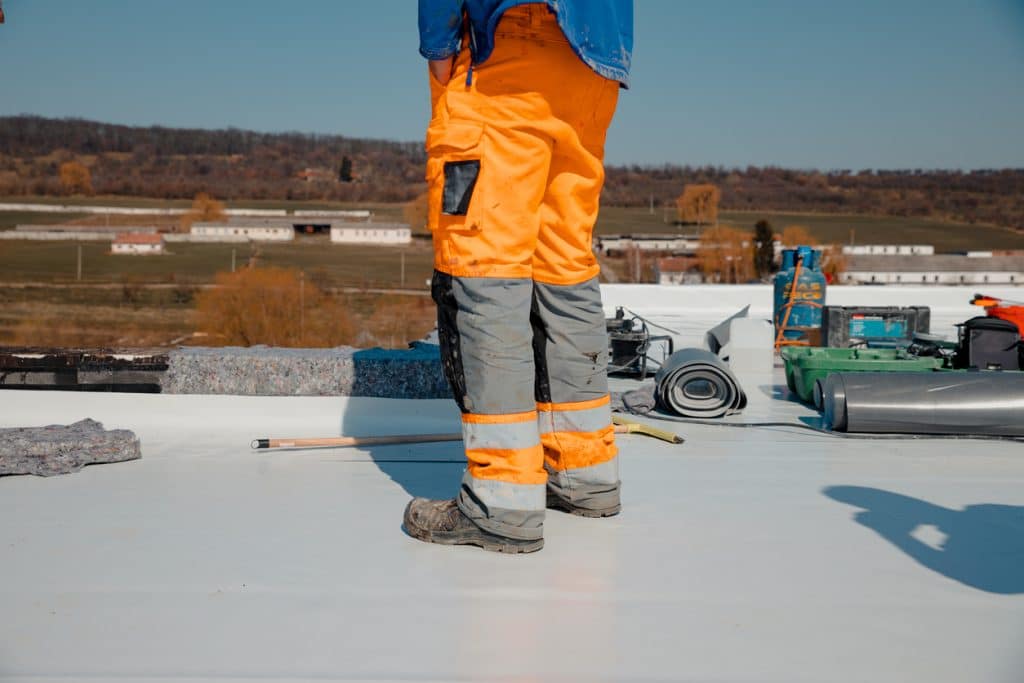Flat roofs are popular for many homeowners and businesses due to their sleek, modern appearance and cost-effective construction. However, flat roofs are not immune to damage like any roofing system. Spotting damage early is essential to prevent more extensive and costly repairs down the road. In this guide, we’ll explore how to spot damage on a flat roof and why it’s crucial to address it promptly.
The Importance of Regular Inspection
Before diving into the specifics of spotting damage, let’s emphasize the importance of regular roof inspections. Routine inspections are your first line of defense against potential damage. You should inspect your flat roof at least twice yearly, in the spring and fall and after severe weather events like heavy storms. Spotting potential roof damage before it occurs may be easier than you think. It happens more often than you’d imagine. So, here are some simple tips to remember:
1. Ponding Water
One of the most common issues with flat roofs is ponding water. Ponding occurs when water accumulates on the roof and doesn’t drain properly. Over time, this standing water can lead to structural damage, leaks, and even a compromised roof deck. To spot ponding water, examine your roof after rainfall. Look for areas where water is pooling and not draining within 48 hours.
2. Cracks and Blisters
Inspect the surface of your flat roof for cracks and blisters. Cracks can develop due to age, extreme temperature fluctuations, or poor installation. Blisters, on the other hand, are typically caused by moisture trapped between layers of roofing materials. Both issues can compromise the roof’s integrity and lead to leaks. Use caution when walking on the roof and visually check for these signs of damage.
3. Membrane Damage
Flat roofs often use a membrane system as their primary waterproofing layer. It’s essential to inspect this membrane for damage regularly. Look for tears, punctures, or visible wear and tear. Even small punctures can lead to significant leaks over time. If you spot any damage to the membrane, it’s best to consult a roofing professional for repairs.
4. Loose or Damaged Flashing
Flashing is used to seal roof transitions and protect vulnerable areas, such as vents, chimneys, and skylights. Over time, flashing can become loose or damaged, compromising the roof’s ability to shed water. During your roof inspection, pay close attention to the condition of the flashing. If you notice any gaps, rust, or loose sections, address them promptly to prevent leaks.
5. Gutter and Drain Issues
Proper drainage is crucial for flat roofs. Clogged or damaged gutters and drains can lead to water buildup and ponding. Inspect your gutters and drains to ensure they are free of debris and functioning correctly. Any blockages should be cleared promptly to prevent water damage to your roof.
6. Vegetation and Debris
Flat roofs are more prone to collecting debris and organic matter, such as leaves, branches, and moss. This debris can retain moisture and cause damage over time. Regularly remove any debris from your roof to prevent moisture retention and the growth of mold or vegetation.
7. Interior Signs of Damage
Sometimes, roof damage may not be visible outside. Pay attention to interior signs of damage, such as water stains on ceilings or walls, musty odors, or peeling paint. These could indicate a hidden roof leak. Address these issues promptly to prevent further damage and potential health hazards.
8. Emergency Roofing Services
Besides regular inspections, preparing for emergencies is crucial. In times of urgency, having access to emergency roofing services is essential. An immediate solution to address critical issues can safeguard your property. Ensure you have a reliable contact for emergency repairs when needed.
Preserving Your Flat Roof with Signature Exteriors: A Vital Investment
Spotting damage on a flat roof requires regular inspections and a keen eye for potential issues. By taking proactive measures and addressing damage promptly, you can extend the life of your flat roof and prevent costly repairs. Remember that safety should always be a top priority when inspecting your roof. If you need clarification on any aspect of the inspection or repair process, consult a professional roofing contractor for assistance.
Maintaining a flat roof involves diligence and regular checks to ensure longevity and prevent costly repairs. Following these guidelines and conducting regular inspections can spot damage early and protect your investment. Remember, trust the experts at Signature Exteriors when it comes to flat roof maintenance and repairs. Contact us today to schedule a professional inspection and ensure your flat roof stays in peak condition for years.

